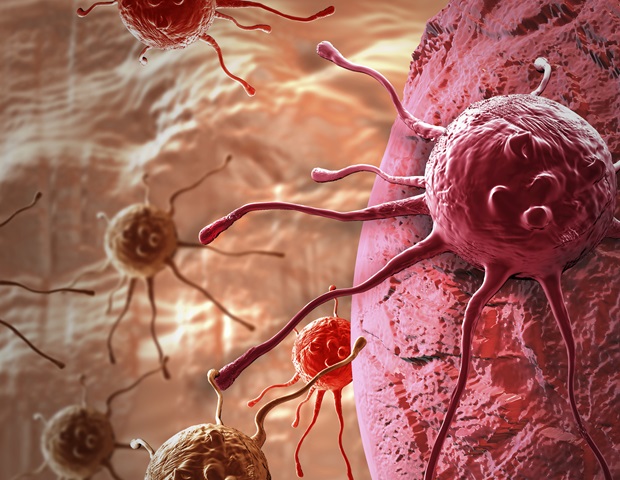[ad_1]

Prostate cancer hijacks the normal prostate’s growth regulation program to release the brakes and grow freely, according to Weill Cornell Medicine researchers. The discovery, published Dec. 13 in Nature Communications, paves the way for new diagnostic tests to guide treatment and could also help drug developers identify novel ways to stop the disease.
A protein called the androgen receptor normally functions to guide the development of the prostate—signaling the cells to stop growing, act as normal prostate cells and maintain a healthy state. The receptor is activated by androgens or sex hormones like testosterone, which triggers the receptor to bind to DNA, causing the expression of some genes and suppression of others. But in cancer, the androgen receptor is reprogrammed to tell the cells to continue growing, driving tumor development.
It’s pretty well known in the field that the androgen receptor gets hijacked in a variety of ways and starts taking on new functions to drive prostate cancer cell growth.”
Dr. Christopher Barbieri, senior author, the Peter M. Sacerdote Distinguished Associate Professor in Urologic Oncology, associate professor of urology and member of the Sandra and Edward Meyer Cancer Center at Weill Cornell Medicine
This study showed that androgen receptors in prostate cells can work as either an accelerator speeding cell growth or a brake inhibiting it. Tumors redirect the receptors’ normal activity to press the accelerator and release the brake.
Uncovering genes that halt cell growth
Much of the research on prostate cancer has focused on how the androgen receptor activates genes that promote cell growth. However, Dr. Barbieri’s team noticed that the protein also loses functions, binding less to some of its normal DNA sites. The researchers hypothesized that those normal binding sites might suppress cell growth, so when the androgen receptor abandons them, the tumor cells can multiply uncontrollably.
To test that, co-first author Dr. Michael Augello, who was a postdoctoral fellow at the time of the study, created a panel of artificial proteins, each containing a DNA-binding section of the androgen receptor and either an activating or suppressing module. “This approach allowed us to examine the genes involved in the normal cell program that remains embedded but hijacked in cancer cells,” said co-first author Dr. Xuanrong Chen, a postdoctoral associate in urology at Weill Cornell Medicine.
Using these artificial transcription factors, the team then tested all the androgen receptor binding sites in cultured cells, cataloging what each site did in both normal and cancerous cells. That experiment revealed a family of genes that can stop the growth of prostate cancer cells.
“When we turn on the genes controlled by these androgen receptor regulatory elements, the cell’s growth is shut down,” Dr. Barbieri said. In contrast, turning on the same genes in healthy prostate cells had no effect. “It really suggests that these elements are there for normal cells to differentiate and be happy, and the cancer has to rewire them in order to grow,” said Dr. Barbieri, who is also a urologic surgeon at NewYork-Presbyterian/Weill Cornell Medical Center.
Findings may lead to new diagnostics
Based on their initial results, the investigators screened tissue samples from prostate cancer patients. “We found that the more the tumors express the normal cells’ androgen receptor program, the better the patient’s prognosis, the better their response to therapies and the better the patient outcome,” said Dr. Barbieri. His lab is already developing diagnostic tests based on these results, which could be used to tailor patient treatment regimens.
“The findings also open up the possibility of developing a therapeutic that reactivates the normal regulatory program in prostate cancer cells to restrain their growth,” said Dr. Chen.
Source:
Journal reference:
Chen, X., et al. (2024). Canonical androgen response element motifs are tumor suppressive regulatory elements in the prostate. Nature Communications. doi.org/10.1038/s41467-024-53734-z.
[ad_2]
Source link



